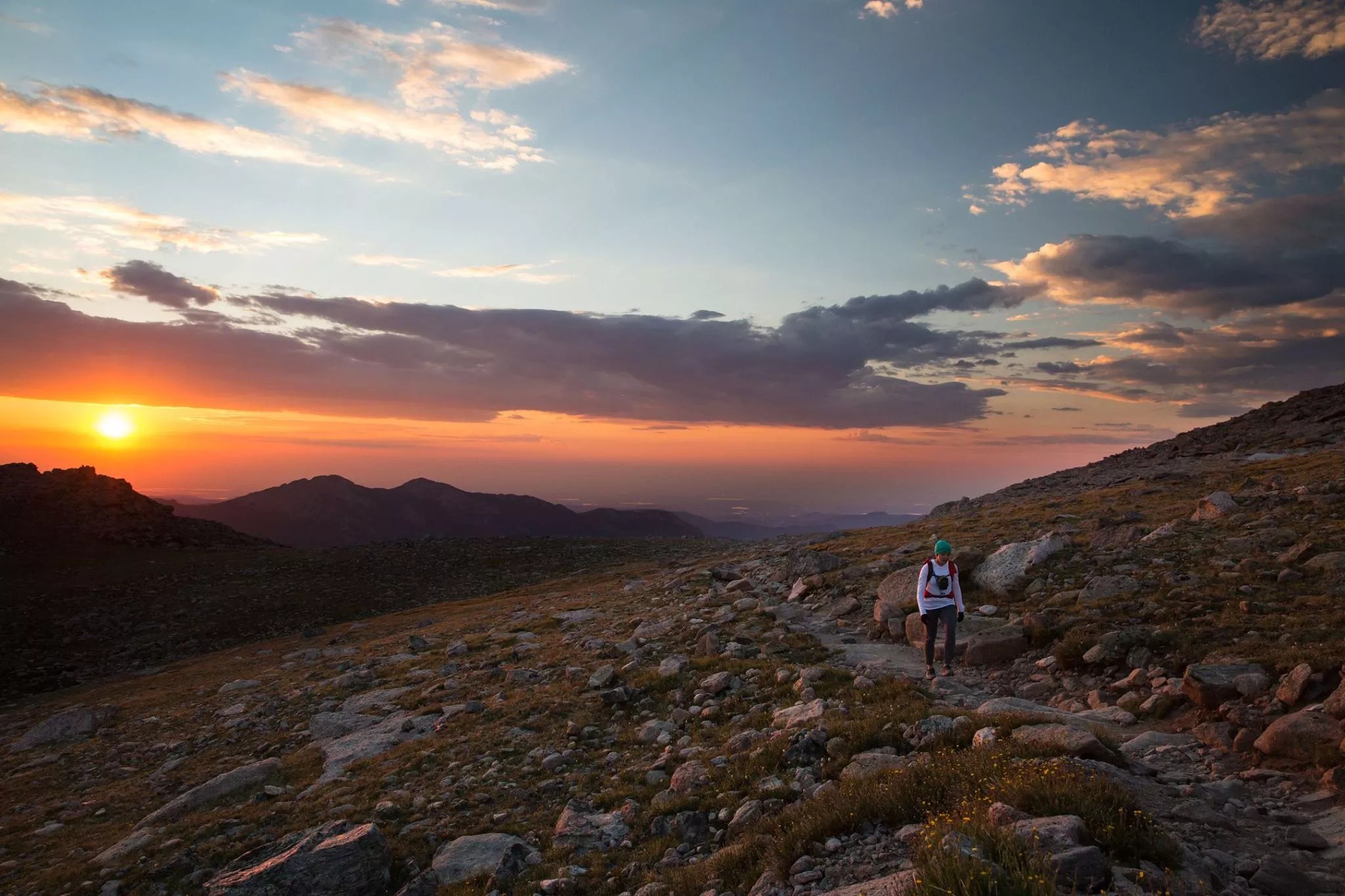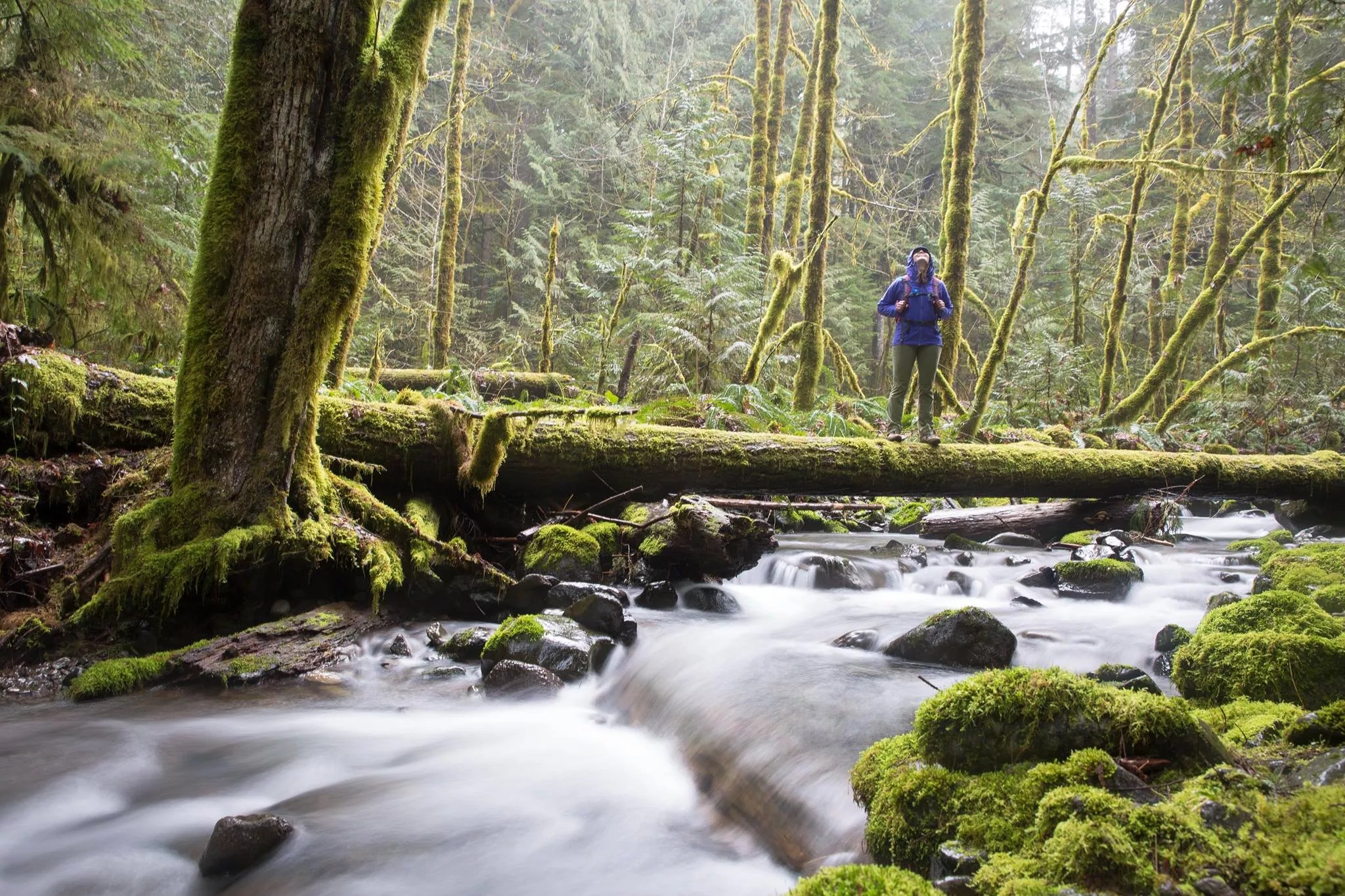
Photo by Will Rochfort courtesy of JustaColoradoGal.com

Audio By Carbonatix
Heather Balogh Rochfort, the woman behind the adventure blog JustaColoradoGal.com, was once a dance specialist whose interest in nature fell well short of obsession. But now she’s the author of Backpacking 101, a guide to those who want to better acquaint themselves with the great outdoors, and she offers her top ten tips for getting started in Colorado.
“I grew up in Broomfield,” says Balogh Rochfort, who jokes that she’s “one of the seven natives left in the state. My parents were great about getting us outside. They took us on a lot of hikes, to places like Chautauqua in Boulder, and they were very big on road trips to national parks. And my mom is a biologist, a plant pathologist, so inevitably, our hikes turned into nature walks.”
As a ten-year-old, “those hikes weren’t my favorite thing,” she admits. “We went camping as a family, and I have great memories of it. But it didn’t necessarily catch on.”
What did was dance, which she loved from age five onward. But after dancing at CU Boulder (while earning a degree in journalism) and spending a year after graduation as part of the dance squad for the Colorado Rapids soccer team, she began casting about for alternate activities – and she found a corollary in outdoor activities.
“The funny thing is, dance is pretty and graceful, but it’s also really hard work, and I think I was looking for something with a similar physical challenge. Dance is physically and mentally demanding, and so is getting involved in the outdoors.”

Heather Balogh Rochfort is Just a Colorado Gal.
Photo by Will Rochfort courtesy of JustaColoradoGal.com
Not that she initially thought of communing with nature as a potential career when she started blogging about her outings. In 2005, after saving for a year, she took a trip to South America, “and blogs had just come out. They were called weblogs at the time, and I thought, if I’m going to be gone for so long, maybe I can start the blog as a diary, so my parents can see pictures and know their kid isn’t lying in a ditch somewhere. I had no intentions beyond keeping my dad, my mom, my sister and my best friend entertained.”
Indeed, she still remembers “the first comment I got from someone I didn’t know. I saw it and thought, ‘I don’t know who that is.’ And it was a wonderful feeling that someone in the world I’d never met was reading what I wrote. That was my first inkling that this could be something different.”
Her audience grew over the course of the next several years, and in 2012, JustaColoradoGal.com reached another level thanks to the folks at Columbia Sportswear, who selected her as a member of what was dubbed #OmniTen. “They were looking for ten influencers around the country who had some kind of online presence,” Balogh Rochfort explains, “and I was one of the people they chose. They flew us down to Sedona, Arizona, for a press trip, and that whole experience became my springboard. I got to meet a lot of working media, and my background in journalism really came full circle.”
Now there’s Backpacking 101, and while Balogh Rochfort acknowledges that “my audience is largely women,” she stresses that the book, and the instructions below, aren’t gender-specific. “I get a lot of questions from beginners about how to start,” she says. “Sometimes when you have to ask a lot of questions, you feel ridiculous and stop trying. So I wanted to put together some of the basics in very snackable phrases, to make it easier for consumption for people just learning to get out there.”

Heather Balogh Rochfort isn’t letting her baby bump stop her from enjoying the great outdoors.
Photo by Will Rochfort courtesy of JustaColoradoGal.com
Lately, Balogh Rochfort has found herself on the receiving end of advice after revealing that she’s expecting her first child with her husband, gifted photographer/videographer Will Rochfort. “Most of the activities I enjoy are more extreme sports, and traditionally, those aren’t supposed to jibe well with pregnancy,” she acknowledges. “I’ve had people question whether I should be doing something or flat-out tell me I shouldn’t – and I think a lot of women hear that same feedback. But a lot of things are still doable. Now that I’m over 22 weeks, I’m not going to climb some Fourteener in a harness. But I can still hike and run. You just have to modify things a little bit – and I’m going to keep that in the forefront of my mind in the future. Just because you have a family doesn’t mean you can’t get out there.”
With that in mind, here are Balogh Rochfort’s top ten tips for beginning backpackers.
Number 1: Be aware of the high altitude
Hands down, Colorado’s higher elevation is the single factor that affects the most backpackers. Most of the best treks are above tree line, which is around 12,000 feet in Colorado. Not only can these higher altitudes leave you gasping for air, but they can possibly make you very ill. Be aware of how you are feeling at all times since altitude sickness can lead to high altitude pulmonary edema (HAPE), a potentially life-threatening condition that can only be cured by immediately descending.
Number 2: Bring extra water
Thanks to the previously mentioned higher elevations, extra water is critical. Once you get above 6,000 feet, you’ll notice that you likely have to pee more frequently; this is normal. Additionally, the air is much drier as you climb higher and it sucks the moisture right out of you. To combat this, get used to drinking plenty of water before, during, and after your trek.
Continue for eight more beginning backpacker tips from Backpacking 101 author Heather Balogh Rochfort.

Heather Balogh gathers no moss.
Photo by Will Rochfort courtesy of JustaColoradoGal.com
Number 3: Have a water filter with you
Since most of Colorado’s high-altitude hiking takes place above tree line, it can be tough to find pure water sources. More often than not, your sources will be high alpine lakes or small streams. Since you need to be drinking a lot of water, it’s a good idea to schlep along a water filter. Not only will this ensure your access to plenty of water to avoid dehydration, but it will also minimize your risk of giardia, a type of water-borne parasite that can simply destroy your stomach. A water filter (or boiling) will kill the parasite so your chances of a happy hike are infinitely higher.
Number 4: Don’t forget a rain shell
Colorado rainstorms above tree line move in fast and fierce! Many a hiker has been caught in wicked weather after setting out that morning to bluebird skies. It’s best to be prepared for any type of weather, regardless of what the forces predict.
Number 5: Early morning trail times are great
Because of those previously mentioned lightning storms, most Colorado backpackers like to hit the trail early. This means you can clock plenty of miles before the afternoon weather rolls in. Even better? You have time to set up camp so you can watch those rainstorms from inside your tent rather than underneath a tree branch.
Tip: If you know that will be hitting a high-altitude summit during your day’s trek, plan to be off the summit by noon at the latest.
Number 6: An insulating layer is important
Just because it’s 85 degrees and toasty in Denver doesn’t mean that your campsite that night will be equally as warm. No matter the weather, always pack an insulating layer. That way, you’re prepared if inclement weather rolls in, and you have a warm layer to throw on when temps plummet after dark.
Number 7: A warm sleeping bag is a must
I’ve taken many friends out who are used to trekking in other parts of the country, and they’re always surprised by the overnight low temps. Again, camping above tree line gets chilly, even in the middle of July and August. Plan on packing a sleeping bag rated for at least 25 degrees (although I always carry a 20-degree bag, since I sleep cold).
Number 8: Protect yourself from the sun
Sure, this rule applies to other parts of the country, but the intense Colorado sun is a very real thing. As you climb higher and crest tree line, that sun gets hotter and hotter, and your bare face will feel the effects. Be sure to wear sunscreen, a hat and lip balm with SPF. Trust me; your skin will thank you!
Number 9: Shoot for prime wildflower season
Memorial Day is frequently considered the kickoff for backpacking season around the country, but that date is a bit premature in Colorado *if* you’re hoping for clean, dry trails. Colorado’s snow pack lasts well into June and July in some areas. That said, this late-season moisture means wildflowers frequently hit their peak in late June and July. Trekking through a meadow spilling over with colorful flowers is a bucket-list item if you can time it properly!
Number 10: Get yourself a wicking shirt
Thanks to the blazing hot sun during the day and chilly overnight temps, the last thing you want is to soak through your clothes and have them not dry! Wicking apparel will draw the moisture away from your skin to the surface of the fabric, where it will evaporate. This keeps both your clothing and your skin relatively dry, meaning you won’t get stuck wearing a wet shirt. Wet clothing (i.e. cotton) can frequently lead to hypothermic conditions, so it’s a good idea to take the necessary precautions to avoid this from happening.